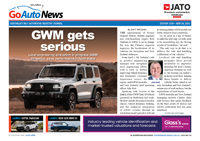 Road Test Road Test
Car reviews - Hyundai - i30 - Premium
OverviewThe top-spec Hyundai i30 diesel undercuts its rivals on price but not equipment21 Sep 2012 AFTER a successful five-year run, Hyundai’s i30 has undergone a complete makeover, gaining a new look, redesigned interior, more space, better safety, and big changes under the skin.
The previous model was a solid effort that changed perceptions of the brand, but Hyundai is shooting even higher for the new model, with the obvious aim of class leadership.
So the question is: has the Korean giant gone far enough to take on Australia’s best small cars? Here we put the range-topping Premium CRDi automatic under the microscope. Model release date: 1 June 2012 to 1 March 2015
Previous model FD i30Released: October 2007 Ended: May 2012 Family Tree: i30AS a replacement for the XD Elantra hatch from 2000 to 2006, the 2007 i30 was a revelation – as well as a great success for Hyundai in Australia, helping to move it away from its cheap driveaway company reputation.
Created to compete against Europe’s finest C-segment five-door models like the VW Golf, this was the first Hyundai in this class designed in Germany, and featured Australian-tuned MacPherson strut and multi-link rear suspension, as well as modified electric power steering for improved dynamics and feel.
Two four-cylinder engines were available from launch – a 105kW/186Nm 2.0-litre twin-cam petrol unit and an advanced 85kW/255Nm 1.6-litre CRDi common-rail turbo-diesel. In 2010 an 89kW/153Nm 1.6-litre petrol powerplant became the base engine.
All drove the front wheels via a five-speed manual or four-speed automatic gearbox – though the CRDi manual gained a six-speeder from September 2011. Three model walks were available: SX, SLX and SR.
A successful i30cw wagon arrived from early 2009. Get the full story: Euro looks, diesel donk and Aussie suspension tune auger well for Hyundai's new i30 |
 Road Test Road Test
Click to share
GoAuto can help you buy a new i30 Customer Terms and Conditions – New Car Lead enquires
Agreement
This is an agreement between GoAutoMedia Pty Limited ACN 094 732 457 of PO Box 18, Beach Road, Sandringham, VIC, 3191 (“we/us”), the owner and operator of the GoAuto.com.au website (“the website”) and the person wanting GoAuto.com.au to provide them with a lead for the purchase of a new car (“you”).
By completing a New Car Lead Enquiry, you agree to the terms and conditions and disclaimers and acknowledge the policies set out below.
Terms and Conditions
- In order for us to effect a lead you must you must complete a New Car Lead Enquiry (“Enquiry”).
- We will call you as soon as possible after you complete the Enquiry and certainly no later than the next business day. When we call, we will discuss with you your new car requirements.
- You consent to our passing on the Enquiry and your requirements to an appropriate authorised motor car dealer as a lead.
- We will contact you again in approximately eight days following your initial enquiry to check on the progress of the Enquiry.
- While we will provide the dealer with the Enquiry and details of your new car requirements, we take no responsibility for what happens after passing on that material as a lead.
- You acknowledge that we are a new car information service providing new car editorial information, pictures and prices to our customers as a guide only. Any new car prices published on the website are the manufacturers’ recommended retail prices and do not include delivery charges and on-road costs. Any authorized motor car dealer to which we pass on your Enquiry as a lead will provide you with full details of the price at which the vehicle will be sold to you.
- You acknowledge that we do not sell motor vehicles. Any sale of a new car to you by a dealer after we have passed on your Enquiry to that dealer as a lead, is a sale by that dealer not by us.
Privacy Policy– New Car Lead Enquires
- We take privacy very seriously. We understand that you will only complete an Enquiry if you can trust us to protect your personal information and use it appropriately. Our policy is to ensure that the personal information collected when you make an Enquiry is only used for the purposes of connecting you with an authorised motor car dealer.
- We do not on-sell information collected from you or any other customer.
- From time to time, we may email you with information or promotions that may be relevant for car buyers. You will continue to receive communications from us unless you tell us that you do not want to receive any advertising or promotional information in the future by unsubscribing from these communications.
closei30 pricingActive Active CRDi Elite Elite CRDi Go N Premium Premium CRDi SR SR Premium
Motor industry news GoAutoNews is Australia’s number one automotive industry journal covering the latest news, future and new model releases, market trends, industry personnel movements, and international events. |
Facebook Twitter Instagram